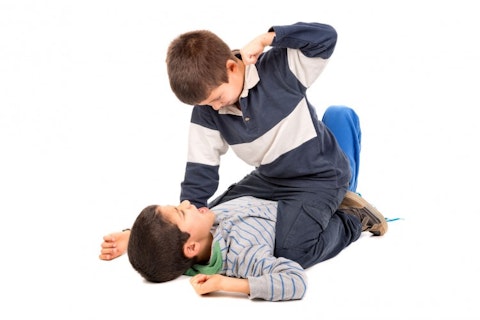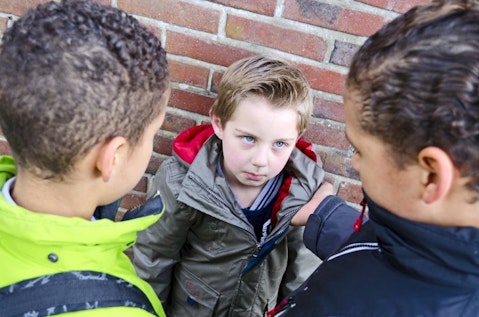If there are still those believing that bullying isn’t a major issue, these 7 facts about bullying, cyberbullying, and suicide in the US won’t do much to change their opinion. For the rest of us, these are the grim reminders of a world our kids are facing every day both in school and at home.
Bullying is a very old behavior that has been with us for a long time. In some parts of the world, it is almost institutionalized and considered an unavoidable part of growing up. While this mindset is slowly changing, as more and more people realize just how harmful it is, we as a society still have a long way to go before we can put it behind us. Perhaps bullying will never be completely eradicated, just like other forms of unwanted behavior, but we can do a lot more to relieve the suffering caused by it and limit its scope. While the United States aren’t present on the list of 11 Countries With the Most Bullying in the World, there are still a staggering number of cases happening every day.

Copyright: dglimages / 123RF Stock Photo
Each form of bullying – be it verbal, physical, relational and cyberbullying – is extremely detrimental to the health of individuals exposed to it, especially children and young adults. The most devastating thing about bullying isn’t the act itself, but the victims’ inability to seek help, out of shame and fear of being ridiculed and told to “suck it up.” Only 17 percent of victims ask for help. Victims often develop social anxiety as a result, which leads to even more bullying, creating a vicious spiral that can – and too often does – lead to suicide, or bullycide, as the bullying that ends in victim’s suicide is sometimes referred to. Cyberbullying can be even more devastating. While it does take place in digital space, the victims are often on their phones and computers at home, which is supposed to be the safest place on the planet for children. The fact that they are in fact being bullied in their room, with their parents present downstairs, leaves them feeling completely unprotected and vulnerable.
Adults can also be victims of bullying and cyberbullying, a fact that is often overlooked whenever the subject is brought up. While the consequences are usually less drastic, since adults have better mechanisms of coping with such situation, they are still present. In the recent decade, we have seen improvements here as well, with anti-mobbing laws being passed worldwide.
Prevention is usually the best form of action when it comes to bullying and cyberbullying. Cyberbullying.org has a great resource any parent can use, called the Technology Contract, that clearly defines rights and obligation of a child when it comes to online behavior and, if enforced vigorously, can go a long way in preventing kids from both engaging in cyberbullying and being a victim of it. Don’t be fooled into thinking that bullying and cyberbullying doesn’t happen in your kids’ lives. It far more prevailing than you’d think and these 7 facts about bullying, cyberbullying, and suicide in the US will prove it to you.
7. Prevalence of bullying and cyberbullying
27.8 percent of students ages 12 to 18 were victims of bullying in school, while 9 percent were cyberbullied. That’s almost one in three students.
Source: NCES

SpeedKingz/Shutterstock.com
6.Bullying and school attendance
18.5 percent of students ages 12 to 17 skipped school because of bullying and 10.3 percent did so because of cyberbullying. About 2 percent said that they skipped school many times to avoid being bullied. That’s 500,000 kids that frequently stay out of classrooms because of bullies.
Source: Cyberbullying.org

Copyright: luislouro / 123RF Stock Photo
5. Bullies and victims
Students that are both bullies and victims that are next in line on our list of facts about bullying, cyberbullying, and suicide in the US, compared to those who are neither, are more likely to suffer from mental health issues and behavior problems.
Source: CDC

Twin Design/Shutterstock.com
4. Cyberbullies
Next in line on our list of facts about bullying, cyberbullying, and suicide in the US is that 15 percent of students admits to cyberbullying others online. Among statistics about bullying, cyberbullying, and suicide in the US, this one illustrating just how many kids engage in bullying others is especially worrisome.
Source: Cyberbullying.org

Copyright: highwaystarz / 123RF Stock Photo
3. Sexual orientation bullying
8 out of 10 LGBT youth have experienced verbal bullying in school, while 4 out of 10 experienced physical harassment.That’s why it’s on our list of facts about bullying, cyberbullying, and suicide in the US.
Source: CDC

Copyright: verkoka / 123RF Stock Photo
2. Peer advocacy stops bullying
In 57 percent of cases, peer intervention stopped bullying. That means that in more than half of cases all it takes is few words from other kids to stop a bully.
Source: Hawkins, Pepler, & Craig, 2001

Copyright: highwaystarz / 123RF Stock Photo
1. Bullying and suicide
29 percent of bullying victims have reported suicidal thought of suicide attempts, while that percentage in kids that are both bullies and victim of bullying is 38 percent. Compare that to the 7th fact on the list and you’ll see why this one is the scariest of 7 facts about bullying, cyberbullying, and suicide in the US.
Source: NCBI

Copyright: bialasiewicz / 123RF Stock Photo





